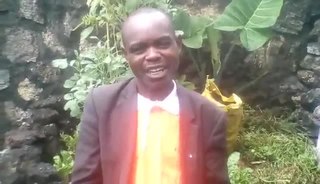Related Research Articles
Most languages of Europe belong to the Indo-European language family. Out of a total European population of 744 million as of 2018, some 94% are native speakers of an Indo-European language. Within Indo-European, the three largest phyla are Romance, Germanic, and Slavic, they have more than 200 million speakers each and together account for close to 90% of Europeans. Smaller phyla of Indo-European found in Europe include Hellenic, Baltic, Albanian, Celtic, Armenian and Indo-Aryan.
Sisaala (Sissala) is a Gur language cluster spoken in northern Ghana near the town of Tumu and in the neighbouring republic of Burkina Faso. Western Sisaala is intermediate between Sisaali and Tumulung Sisaala.
The Ngbandi language is a dialect continuum of the Ubangian family spoken by a half-million or so people in the Democratic Republic of Congo and in the Central African Republic. It is primarily spoken by the Ngbandi people, which included the dictator of what was then known as Zaire, Mobutu Sese Seko.
The Kele language, or Lokele, is a Bantu language spoken in the Democratic Republic of the Congo by the Kele people.
Yaka, also spelled Iaca and Iyaka, is a Bantu language spoken in the Democratic Republic of the Congo and Angola. There are two dialects, Yaka proper, which comprises 99% of speakers, and Ngoongo. The alleged varieties Pelende and Lonzo are political rather than ethnolinguistic entities.
West Teke is a Bantu language spoken in the Republic of Congo and Gabon.

Lega is a Bantu language, or dialect cluster, of the Democratic Republic of the Congo. There are two major varieties, Shabunda Lega and Mwenga Lega; Mwenga Lega, with about 10% of speakers, finds Shabunda difficult to understand. Kanu has been assigned a separate ISO code but is a dialect of Shabunda, and no more divergent than other dialects.
Ngando is a Bantu language in the Soko-Kele languages group that is spoken by the Ngando people in the Democratic Republic of Congo.
Kela, or Lemba, and Yela are a Bantu language of the Democratic Republic of Congo spoken by several hundred thousand people in the Kasai-Oriental, where the spoken dialect is "Kela", and Équateur Province, where the spoken dialect is "Yela".
Ding is a Bantu language that is spoken in the Democratic Republic of Congo.
Central Banda is a dialect continuum of the Banda languages spoken by around one million people, primarily in the Central African Republic. The varieties may be mutually intelligible, especially the Mid-Southern–Gobu–Kpagua–Mono–Ngundu cluster. The other varieties are Bambari, Banda-Banda, Mbrès, Ndélé, and Togbo-Vara Banda.
South Banda is a dialect continuum of the Banda languages spoken by around 200,000 or so people, primarily in the Central African Republic but with ten thousand or so in the Democratic Republic of the Congo. The two varieties may be mutually intelligible.
Kaba proper is a Bongo–Bagirmi language of Chad and the Central African Republic. It is one of several local languages that go by the names Kaba and Sara. There are three ISO codes, which Ethnologue acknowledges may be the same thing.
Kele is a Bantu language of Gabon. Dialects of the Kele language are scattered throughout Gabon.
Central Teke is a member of the Teke languages dialect continuum of the Congolese plateau. Central Teke dialects are Ngungwel and Mpu (Mpumpum), Boo, and Nzikou (Njyunjyu/Ndzindziu). They are spoken in the Malebo Pool region of the Republic of Congo, with an unknown number of Boo speakers in DRC.
Ntomba and Lia (Bolia) are closely related Bantu languages of the Democratic Republic of the Congo, close enough to be considered dialects of a single Lia-Ntomba language.
Enya is a Bantu language of the Democratic Republic of the Congo.
Mumeng is a dialect chain of the Austronesian family in Morobe Province, Papua New Guinea. Dambi–Kumalu and Patep–Zenag–Gorakor have a degree of mutual intelligibility. Kapin may belong as well.
Holo is a Bantu language of Angola and the Democratic Republic of Congo. Yeci, Samba or Hungu may be separate languages.
Losengo (Lusengo) is a Bantu language spoken in the Democratic Republic of the Congo. It has had a significant effect on Lingala, the most important Bantu language in the two Congos.
References
- ↑ Gbanziri at Ethnologue (18th ed., 2015) (subscription required)
Buraka at Ethnologue (18th ed., 2015) (subscription required)